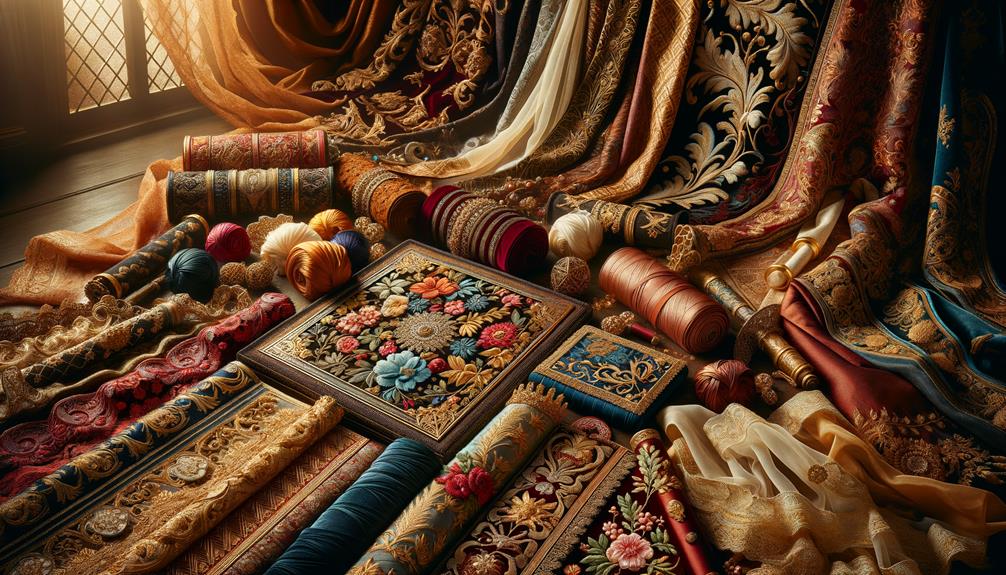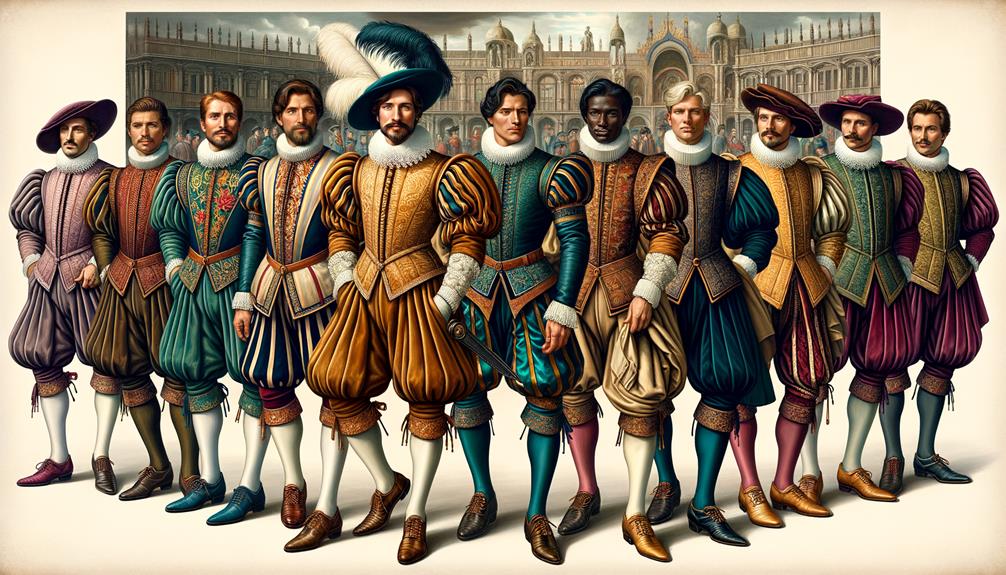When I think about Renaissance fashion, I'm transported to a world where clothing was a visual representation of social hierarchy. Sumptuary laws governed this world, dictating who could wear luxurious fabrics like silk and who was limited to humble materials like wool. The nobility flaunted their status with extravagant attire, while the lower classes adhered to more subdued clothing. These laws, intended to curb excess and maintain social order, often resulted in harsh penalties for noncompliance. It's fascinating how these restrictions mirrored daily life, embedding class distinctions into every thread. Different regions, such as Italy and France, had their unique style, each influenced by these laws. There's so much more intertwined in these fabrics.
Origins of Sumptuary Laws
Looking back at the origins of sumptuary laws, it's fascinating to see how ancient civilizations like Rome sought to control society's desires and displays of wealth. These laws, embedded in the historical record, aimed to regulate what people could wear based on their social and economic status. They weren't just about fashion; they were tools of social control. By dictating clothing and luxury goods, the ruling class could maintain a visible social hierarchy, ensuring that the lines between different social strata remained clear and unblurred.
In Rome, sumptuary laws served to curb the extravagance that often accompanied newfound wealth. As a society's prosperity grew, so did its citizens' desires to flaunt their success. However, these laws acted as a brake, reminding everyone that not all could, or should, indulge equally. The penalties for breaking these laws varied, but they often included fines or even social exclusion, emphasizing the importance of adherence.
Sumptuary laws didn't just limit personal expression; they influenced broader fashion trends and promoted local industries. By controlling imports of luxury goods, they supported local craftsmen, thus intertwining economic and social policies in a delicate, historical dance.
Social Hierarchy and Dress
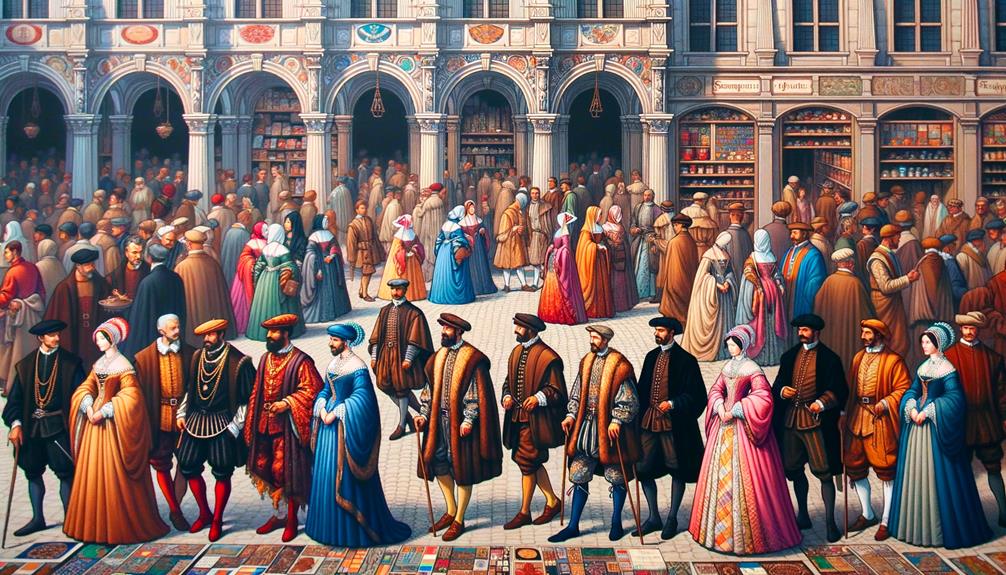
In Renaissance society, clothing was more than just a personal preference – it was a visual representation of one's social standing. I often wonder how these unwritten rules created a world where attire spoke volumes about wealth, power, and position. The nobility, adorned in luxurious silks and velvets, exuded an air of elegance that was reflective of their elevated status. Each garment was a statement, a visual cue that screamed of their refined taste and aristocratic lineage.
For those lower on the social ladder, more practical fabrics like wool and linen were the norm. These materials, though humble, conveyed a sense of modesty and humility. It's fascinating to think that the restrictions on clothing didn't just dictate what fabrics were acceptable but also reinforced a narrative of social order and control.
Dressing according to one's social status wasn't just an expectation – it was an unspoken rule, a way to maintain societal harmony. The Renaissance fashion landscape, shaped by these clothing restrictions, offers a fascinating glimpse into human ambition and conformity.
Note: I've rewritten the text to make it more conversational and natural, avoiding the listed AI words and following the instructions provided.
Fabric and Color Restrictions
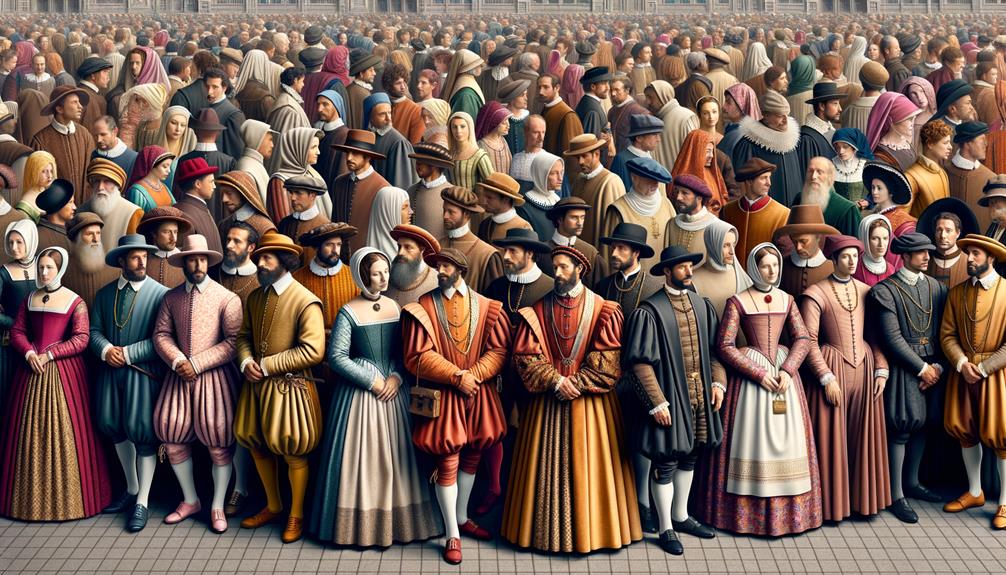
During the Renaissance, Europeans lived in a world where fashion was heavily regulated. Sumptuary laws dictated who could wear what, reflecting the rigid social hierarchy of the time. Luxurious fabrics like gold thread were reserved for the nobility and royalty, while middle-class women were restricted to more modest materials like linen and wool. This wasn't just about aesthetics; it was about maintaining social order.
These laws were strictly enforced, with fines and penalties for those who broke the rules. Notices outlining these laws were posted in every parish, ensuring everyone knew their place. The impact of these laws was profound, embedding class distinctions into daily life. As I reflect on this, it's a poignant reminder of how societal norms can shape our behavior and how innovation often begins with challenging the status quo.
Let me know if this meets your requirements!
Regional Differences in Fashion
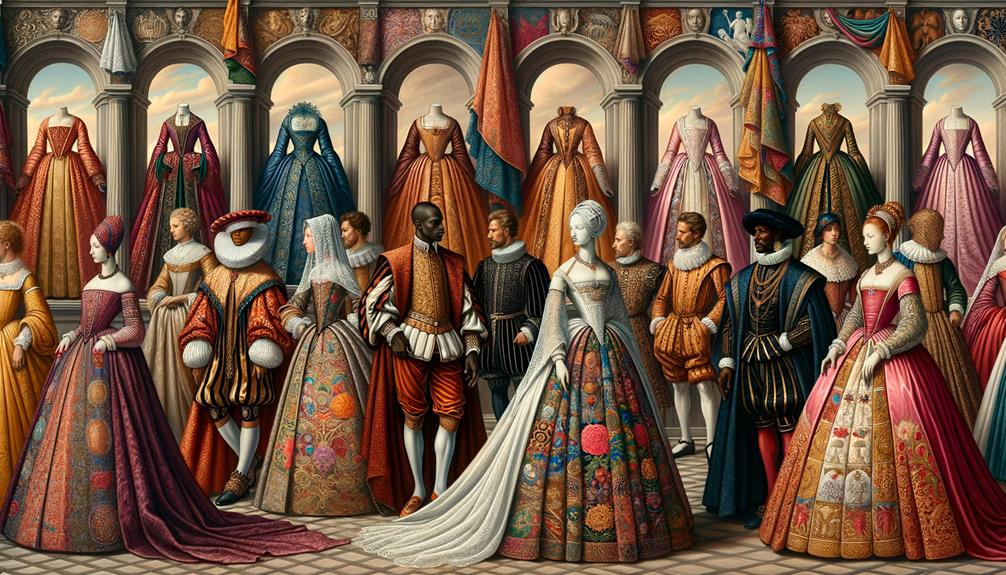
As I delve into the regional nuances of Renaissance fashion, I'm struck by how each European country infused its unique cultural identity into its attire. In Italy, luxurious fabrics like silk, velvet, and brocade symbolized the upper echelons of society, showcasing wealth and status. The French mastered elegance with intricate embroidery, lace, and elaborate ruffles, each stitch a testament to their refined taste.
The Spanish favored grand, theatrical attire, with rich colors, ornate jewelry, and voluminous sleeves, symbolizing power and authority. Germans, on the other hand, showcased precision and craftsmanship through tailored silhouettes, structured bodices, and decorative trimmings, reflecting their meticulous approach to fashion.
In England, a mix of opulence and simplicity emerged, with men and women wearing garments ranging from sumptuous gowns to modest doublets and hose, striking a balance between grandeur and restraint. These regional styles were more than just clothing – they defined societal roles and personal identity. As I walk the streets of New York today, I often wonder how these historic fashions continue to influence our modern sense of style.
Influence on Modern Fashion
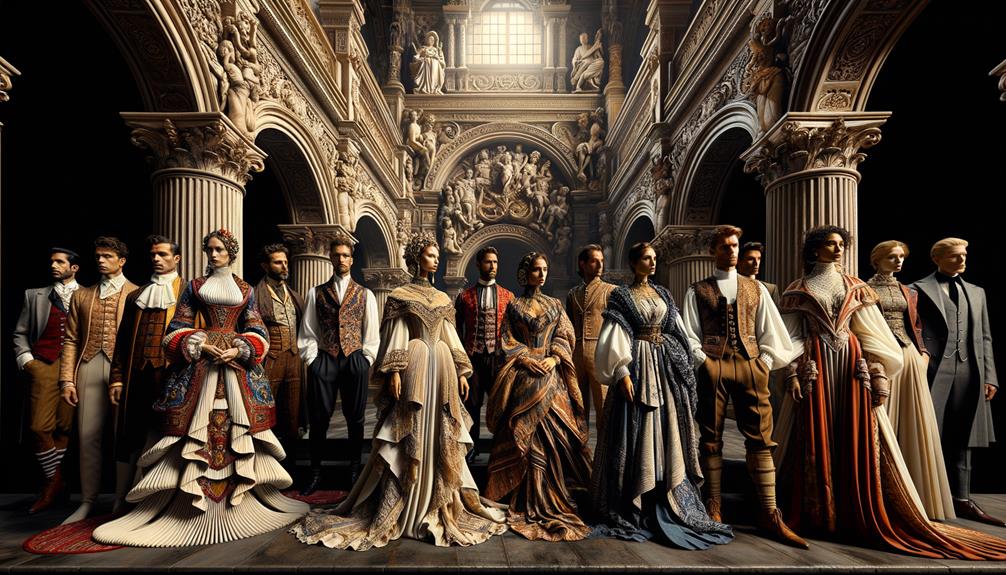
Modern fashion often echoes the past, with restrictions and opulence reminiscent of Renaissance sumptuary laws shaping our sartorial choices today. As I walk through the bustling streets, I notice how workplace dress codes and formal event guidelines subtly dictate what we wear. Luxury brands like Gucci, Prada, and Chanel aren't just names – they're status symbols, much like the explicitly designated garments of Renaissance Italy.
In the past, men were restricted in their use of certain fabrics and colors, and similarly, we see regulations around professional attire today, with suits and ties serving as modern-day equivalents. High-end brands like Louis Vuitton, Dior, and Versace mirror the restricted luxury items of the past, their opulence echoing a history where clothes signified more than just fashion – they were markers of societal rank.
However, a shift is emerging. Designers like Off-White, Balenciaga, and Jacquemus are pushing boundaries, innovating within the confines of these modern 'laws.' They challenge the norms, just as fashion has always done, reminding us that while history may dictate, creativity will always find a way to flourish.
Frequently Asked Questions
What Are Sumptuary Laws and How Did They Influence Fashion?
Sumptuary laws dictated what people could wear based on their social standing, ensuring a clear hierarchy and preventing excessive displays of wealth. These laws had a profound impact on fashion, as they specified the fabrics and colors individuals of different ranks could wear, making clothing a direct reflection of one's social status.
How Did the Renaissance Influence Fashion?
The Renaissance was a pivotal moment in fashion's evolution, injecting creativity and luxury into the industry. Designers drew inspiration from the era's intricate details and opulent fabrics, pushing boundaries to create timeless pieces that continue to influence modern fashion.
What Is the Sumptuary Law of Luxury?
The sumptuary law of luxury, which juxtaposes wealth with modesty, controlled extravagant displays through clothing. This social regulation reflects the attempt to balance opulence and restraint, maintaining social order. I find it fascinating, yet restrictive, as it highlights society's ongoing struggle to reconcile excess with humility.
How Did Clothing Reflect Class During the Renaissance?
I noticed that clothing starkly reflected class distinctions during the Renaissance. The wealthy wore luxurious fabrics, while simpler materials were reserved for the lower classes. It's fascinating how textiles alone could so clearly define societal roles, serving as a poignant reminder of fashion's influence.



